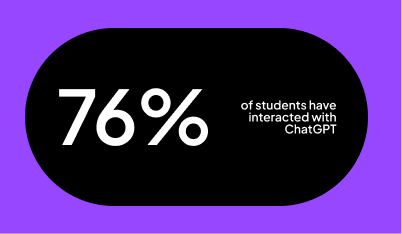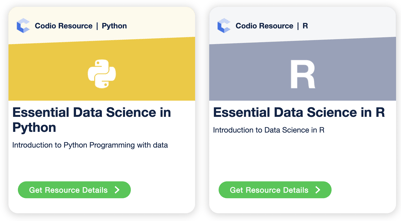OpenAI's ChatGPT was launched in November 2022 and rapidly gained attention from higher education, as shown by a surge in related search queries about academic integrity and plagiarism concerns.
To respond to this popularity, Codio conducted a study to examine how 371 U.S. college students in computing courses interact with and perceive generative artificial intelligence (GenAI) tools. For a more detailed breakdown of our findings, download the full report.
What tools are students using?
Our study's findings are significant. They reveal that a substantial majority (76%) of students have interacted with GenAI tools. ChatGPT and Google Bard emerged as the most popular tools, surpassing integrated options like GitHub Co-pilot and Replit Ghostwriter. Nearly half of the students surveyed reported using GenAI tools for academic tasks.
However, their financial commitment to these tools varied, with half the participants willing to spend up to $10 or more monthly. This willingness to invest appears to be driven by perceived value rather than usage frequency, a critical insight from our research.
How do students use GenAI?
While faculty are concerned about students using GenAI for cheating (e.g., Zastudil et al., 2023), and students report that cheating makes cheating easier to get away with, students' number one use of GenAI was understanding programming prompts and error messages. These uses align with academic integrity guidelines, suggesting students use these tools responsibly. In computing courses, over 43% of students utilized GenAI tools for assignment comprehension, 41% for error explanation, and nearly 39% for algorithm writing, further supporting this positive alignment.
These are relatively unproblematic uses of GenAI from an academic integrity standpoint, and our findings highlight the need for computing professionals to work on more effective communication with novices. When students were asked why they chose not to use GenAI on assignments, most replied, "I prefer to do my own assignments." Aligning nicely with students' views, curriculums are also evolving to reflect this new era, with some courses now teaching how to use GenAI and necessitating citations for its utilization.
Are GenAI tools accurate?
While they often found these tools accurate, these accurate responses were only sometimes helpful and frequently saved minimal, if any, time. 47% of students report being taught about how to use these tools effectively and/or how they work – with 23% of them taking courses allowing their use with citation (compared to 18% of courses forbidding their use). Our findings suggest that the effectiveness of GenAI tools depends on a user's skill level. If students are taught how to leverage GenAI properly, they might become more efficient users.
Looking to the Future
Concerns regarding AI displacing programming jobs show a divergent outlook, with older students (45-60 years) being the most worried and younger students (18-29 years) less so. This illustrates a generational divide in perceptions of GenAI's potential impact on employment.
GenAI is here and here to stay. No matter the critical reception, students are already using the tools available to them, often in principled ways. Educators must consider the inevitability of using GenAI going forward and equip students to use the tools responsibly and efficiently.



